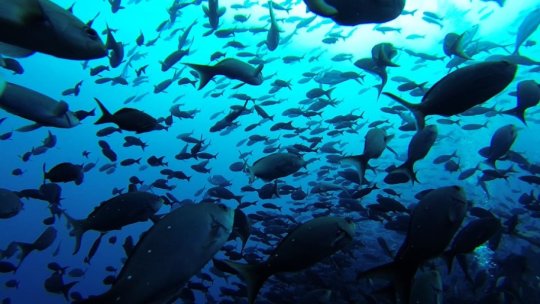[ad_1]
In a new analysis of the effectiveness of marine protected areas worldwide, University of Massachusetts Amherst marine ecologist Brian Cheng and colleagues report that reserves not only replenish target fish populations, they also restore ecological functioning. However, not all reserves performed equally well.
Ecological functioning is a measure of the activities that maintain life, Cheng points out. In this case, it involves rates of predation and herbivory, or when animals eat other animals or plants, he adds. Without these activities, these ocean habitats would be radically different, providing fewer benefits to society.
Analyzing field experiments from across the globe, he and collaborators at the Smithsonian Institution and the University of Florida say their findings reveal that marine reserves increase predation rates by protecting predators that were once heavily fished by humans, allowing their numbers to thrive. Their study appears online in the current issue of Ecology, the flagship journal of the Ecological Society of America.
In turn, these predators have greater impacts on their prey. For example, at less effective reserves, the odds that a predator consumed prey species was 1-to-1, just an even chance, the researchers note. In contrast, at highly effective reserves, the odds of a prey species being preyed upon skyrockets to 49-to-1. “You would not want to be a prey species in these reserves,” Cheng notes.
He likens the creation of a marine protected area to rebuilding a village, which means bringing back many different types of workers to do varied jobs: teachers, police officers, firefighters, shopkeepers and carpenters, for example. Without teachers, students would have no school, he points out, and having no firefighters would be dangerous.
“We are trying to rebuild many, many communities like this in the ocean,” Cheng says. “We have historically removed many of the fish and other species that have important jobs as predators and herbivores, just like the teachers and firefighters. Imagine trying to rebuild these communities without paying attention to this. Our research points out that these rebuilt ocean communities are not all the same, and we need to pay attention to the different kinds of jobs each species does in order to rebuild in an effective and sustainable way.”
Results of this work highlight an important gap in scientific knowledge about marine reserves, Cheng says. “Past efforts have mainly focused on quantifying the abundance and diversity of fished species inside reserves. This is a critical first step, but it doesn’t give us information on how communities within reserves are altered by protected status. If you remove a species, will another take on its role or function, or not?”
“Marine reserves can really work well to restore part of the ocean, but one of our conclusions is that they are not all equally effective,” Cheng points out. “We need to ensure that our existing reserves are well supported in addition to building new reserves,” Cheng says.
He and co-authors also point out that humans have removed an estimated two-thirds of the oceans’ total fish biomass. To protect and restore biodiversity, people have created marine protected areas where harvesting fish is reduced or not allowed. The number of marine protected areas has grown exponentially over the past 50 years, they point out. Although this growth is encouraging, only four percent of the ocean surface is protected from harvest.
While many studies have evaluated the effects of reserves on biodiversity, there has been “no broad assessment to determine their influence on ecological processes such as predation and herbivory,” the authors point out.
They hope that this work, which was supported by the Tennenbaum Marine Observatory Network, the Smithsonian Institution and Smithsonian Johnson Funds, will help stakeholders who manage and promote marine reserves and scientists who design and research reserves, along with residents of coastal communities near protected areas.
[ad_2]















